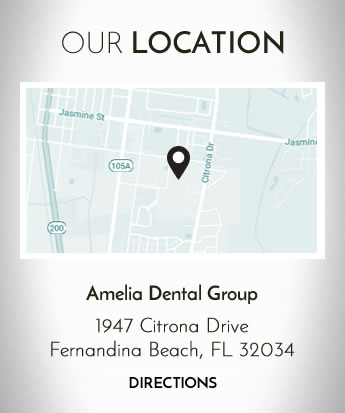Sometimes it is necessary to sedate patients during dental procedures to allow them to be more comfortable and to decrease their anxiety. The two methods that dentists typically use are general anesthesia and IV sedation. Let’s learn the differences between these two types of sedation, and more specifics about most dentists’ preferred method of IV sedation.
IV stands for intravenous, and means the medicine is administered through an injection into the veins. It causes you to become very sleepy and unable to feel pain, but you are aware of what’s happening around you and are even able to follow instructions. On the other hand, general anesthesia requires inhaling sedation gas through a mask. This causes total unconsciousness, so that you are unaware of anything going on around you and experience no pain.
Many dentists prefer IV sedation because you can follow commands if needed, and the medication levels can be adjusted easily depending on your oxygen levels, blood pressure, and pulse. IV sedation does impair you enough that you should arrange help with transportation home after the procedure because you will be groggy, and you may experience some nausea. Other than those possible side effects, there are really no other issues to worry about with this type of sedation. IV sedation is considered to be a safe, fast, and painless type of anesthesia when it is necessary during dental treatment.
Fernandina Beach sedation dentistry
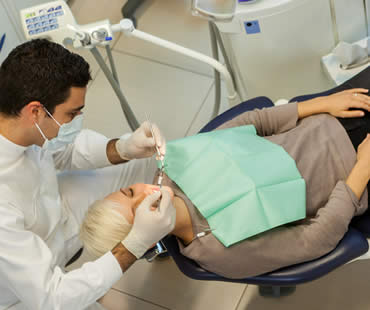
Fear and anxiety make dental treatment a challenge for many people. Sedation dentistry offers many options to help patients overcome their fears and experience a more comfortable, relaxing treatment. One of the most common options in sedation dentistry is oral conscious sedation. Here are some common questions about oral conscious sedation and answers about how it can help alleviate your stress about undergoing dental procedures:
- What is oral conscious sedation? This type of sedation utilizes a combination of pain relievers and sedatives to induce an altered state of consciousness that allows you to undergo all kinds of dental treatment in a totally relaxed and comfortable state.
- Am I asleep during the procedure? Patients who receive oral conscious sedation are drowsy but awake and able to communicate with their dental professional. This type of dental sedation allows you to be relaxed but aware.
- Will I feel pain during the dental treatment? With oral conscious sedation, you will most likely not feel any discomfort or pain.
- Is oral conscious sedation safe? While it is considered safe for most patients, your dentist will evaluate your medical and dental health to determine if you are a good candidate for oral sedation.
- Can I resume normal activity immediately after receiving oral sedation? Because you may still be slightly drowsy and under the effects of the medication, it is advised that you arrange to have a friend or family member drive you home after treatment.
- Will I have bad memories of my dental treatment? With oral conscious sedation, you will feel completely relaxed and have little to no memory of your dental procedures.
Thanks to sedation dentistry options like oral conscious sedation, you no longer have to dread or postpone necessary dental treatment due to fear and anxiety. Contact your dentist to find out how they can help you conquer your fears and restore your oral health with this gentle approach to dentistry.
Schedule your appointment at our Fernandina Beach dental office
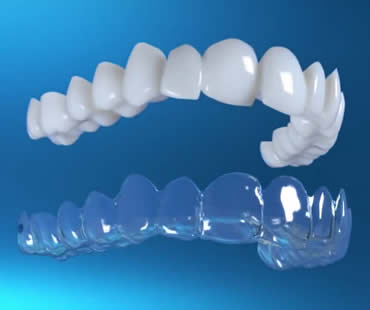
If you are considering straightening your teeth, you may be looking into various orthodontic options. One treatment for correcting a crooked or overcrowded smile is Invisalign. Invisalign uses a clear set of BPA-free plastic trays called aligners to straighten teeth without the metal and brackets associated with traditional braces. The following are some common questions you may have about Invisalign:
Who is a good candidate for Invisalign? Patients who have healthy teeth and gums are usually good candidates for Invisalign. Adults, teens, and older children whose teeth, including their second molars, have grown in completely can be considered for treatment with Invisalign.
What kinds of problems can Invisalign correct? Invisalign corrects the same dental problems as traditional braces, including simple to severe overcrowding, gaps, crossbite, overbite, and underbite.
How long does Invisalign treatment take to complete? Most Invisalign cases are completed within one year. However, the exact amount of treatment time is dependent on your individual situation.
How long do I have to wear the aligners each day? You will remove the Invisalign aligners when you eat, drink, or clean your teeth. Otherwise, the aligners should be worn for a recommended 22 hours per day to achieve the desired results.
Are there food restrictions with Invisalign? Because you remove the aligners when you eat, there are no limitations to the types of food you can eat while undergoing treatment.
Are retainers necessary with Invisalign? Once you have completed treatment, you will need to wear retainers while you sleep to ensure your teeth stay perfectly straight.
To determine if Invisalign is a viable option for your specific orthodontic needs, you should schedule a consultation with an Invisalign trained dental professional where you can ask additional questions specific to your case. No matter what stage of your life, Invisalign offers a comfortable, state-of-the-art approach to beautifying and improving the quality of your smile.
Our dental office is located in Fernandina Beach
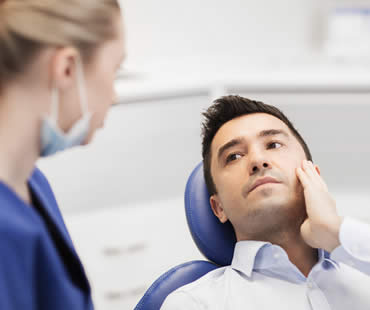
Root canal treatments are specifically designed to relieve the tooth pain associated with an infected tooth root. Patients come in with pain, and often leave the procedure with less discomfort than before. However, if you’ve recently had a root canal treatment on one or more of your teeth, you might be experiencing discomfort following the procedure. Fortunately, there are things you can do at home to take care of it.
Are your gums sore, tender or swollen surrounding the affected tooth? This is likely the result of the tiny metal clips that affix a rubber dam around the tooth, protecting it and protecting your mouth. The clips are attached along the gum line, and can leave tiny bruises or sometimes small cuts in the soft gum tissue. This pain should alleviate within two days of the treatment.
Is the tooth itself sore? This is a common occurrence and is typically the result of an inflammation of the mouth tissues that encase the tooth root. The tools used by the endodontist to perform the procedure can irritate the tissues.
Both of these types of pain can be dealt with by several over-the-counter analgesics. The ones that are most recommended to treat dental pain are those that possess anti-inflammatory agents: naproxen sodium, ibuprofen or aspirin, etc. If you are also taking narcotics prescribed by your dentist, do not take any further medication, over-the-counter or prescription, until you have checked with your dentist. Dangerous reactions can occur.
If you have been prescribed antibiotics, do not stop until you have completed each recommended dose. This ensures that your tooth remains free of infection and can heal thoroughly.
Ask your endodontist if you have other concerns about treating your post-root canal treatment pain.
Our dental office is located in Fernandina Beach

Thank goodness for modern dentistry that allows people to have attractive smiles even though their teeth may not cooperate. For some people, regular dental care is enough to keep their teeth and gums healthy and looking nice. However, over time many people’s teeth become stained or discolored. Chips and cracks can occur that cause unsightly and embarrassing problems. If things like this happen to you, it’s time to consider restoring your smile with porcelain veneers.
Veneers are thin porcelain shells that are permanently adhered to the front surfaces of your teeth, hiding imperfections and giving you a whole new look. It is a simple, non-invasive procedure that can make a dramatic difference in your appearance without any pain or great inconvenience.
There are a variety of benefits to getting porcelain veneers. Here are some of the great advantages you can expect if you and your dentist decide that veneers are right for you:
• Veneers completely hide stains and discolorations on your teeth. Years of eating and drinking foods that tend to stain your teeth can be erased with veneers. For tough stains, sometimes whitening techniques simply aren’t enough. Veneers provide an easy remedy that will immediately and effectively hide your problem teeth.
• You and your dentist can choose the exact color that you’d like your veneers to be. You can select the best shade to match your other features and your goals for your smile.
• Obtaining veneers does not require invasive procedures like reshaping, scraping, or extensive contouring of your teeth. There isn’t any pain associated with the veneer process.
• Only one or two dental appointments are necessary to get veneers.
• Porcelain veneers are durable and strong, often lasting from ten to fifteen years.
• Veneers give you back your confidence so that you are proud to smile and display your beautiful look.
Cosmetic dentist in Fernandina Beach – Dr. Kitson
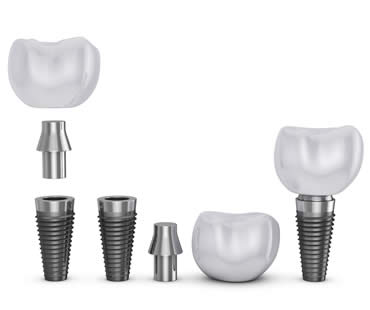
Dental implants are artificial teeth that mimic your natural tooth roots and are placed directly into your jawbone to provide optimal support for dental crowns, bridges and removable prosthodontics such as dentures. If you are considering dental implant therapy, please use the following guide to answer some of your questions.
- Am I a candidate for dental implant treatment? Dental implants can be used in healthy patients whose jawbones have completed growing and who have sufficient quality and quantity of jawbone to have a healthy implantation.
- Is dental implant treatment safe? Dentists agree that in healthy patients who are good candidates for the procedure, dental implants are low-risk.
- Will I be in a lot of pain during dental implant surgery? Dental implant surgery is typically performed as an outpatient procedure in your dentist’s office under local anesthesia.
- Does it take a long time to undergo the procedure? Treatment can generally be performed in under an hour, depending on the number of implants required.
- Is recovery painful? Healing from dental implant surgery is typically quick and easy for most healthy people. Any lingering pain can be treated with over-the-counter pain relievers.
- When will I get my new teeth? Implants must fuse to the bone in a process called ossification, a process that can take up to six months. In most cases, temporary teeth will be in place during this time period.
- How do I care for my dental implants? You will take care of your implants in the same way you would care for your natural teeth. Brush twice a day or after meals, especially before bedtime. Floss daily and continue to maintain regular dental appointments for checkups and preventative care.
- How long do dental implants last? Dental implants can last for twenty or thirty years if you care for them properly.
We treat patients from Fernandina Beach and the surrounding area






